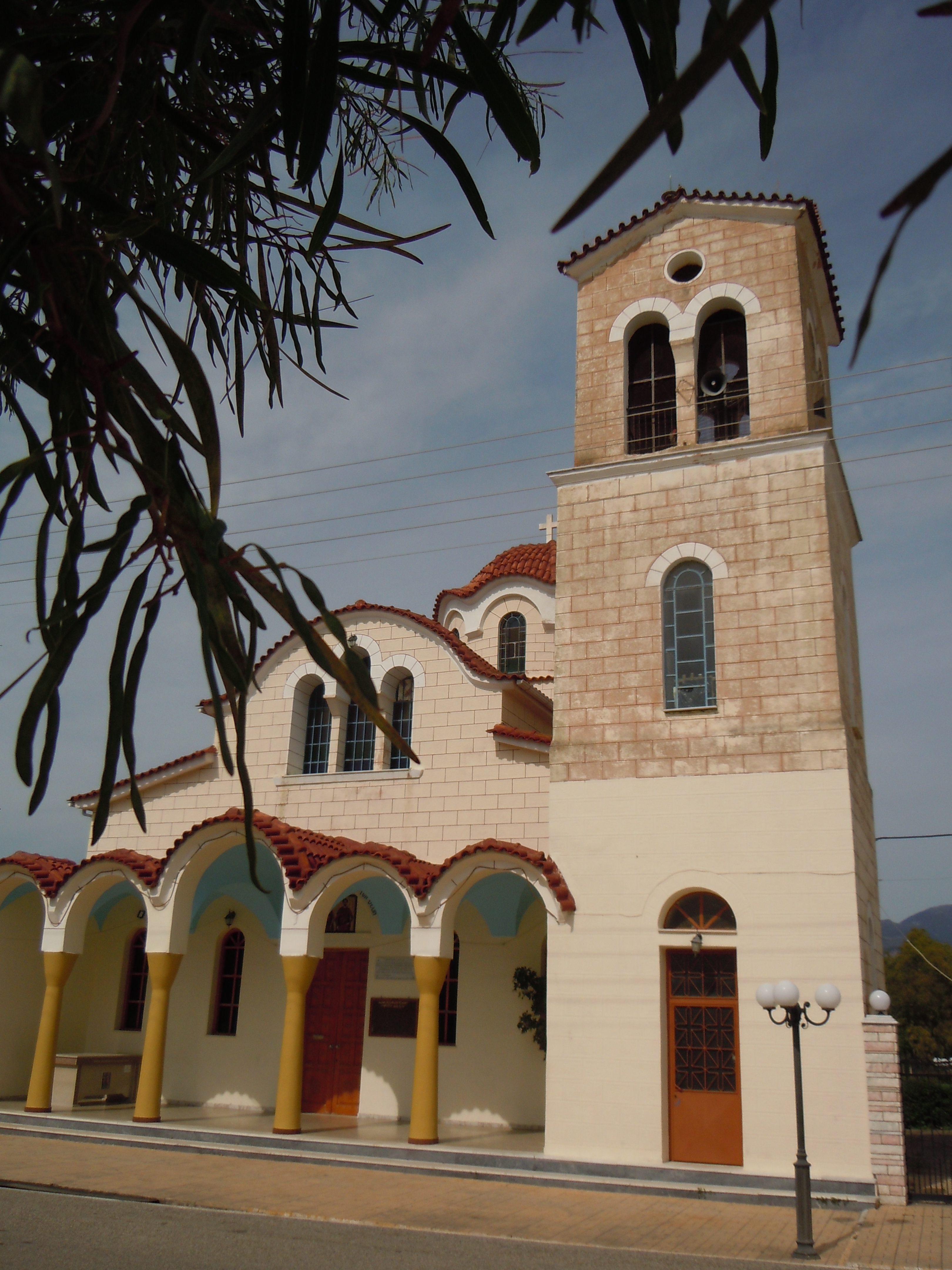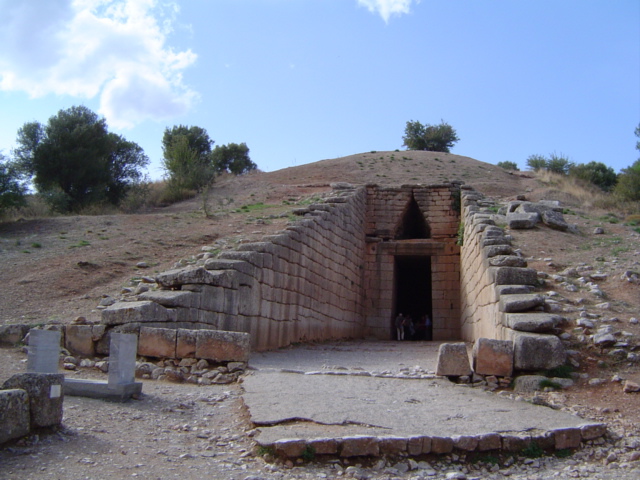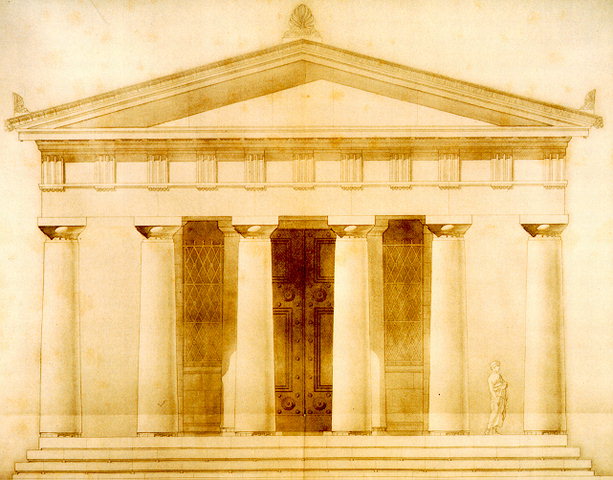|
Pylus (Triphylia)
Pylus or Pylos ( grc, ╬ĀŽŹ╬╗╬┐Žé) was a town in Triphylia in ancient Elis, mentioned only by Strabo, and surnamed by him ╬żŽü╬╣ŽåŽģ╬╗╬╣╬▒╬║ŽīŽé, ß╝łŽü╬║╬▒╬┤╬╣╬║ŽīŽé, and ╬ø╬ĄŽĆŽü╬Ą╬▒Žä╬╣╬║ŽīŽé. He describes it as situated 30 stadia from the sea, on the rivers Mamathus and Arcadicus, west of the mountain Minthe and north of Lepreum. Upon the conquest of the Triphylian towns by the Eleians, Pylus was annexed to Lepreum. Strabo also contended that this Pylus was the homeland of Nestor because in its vicinity passed the Alpheus, territory where the kingdom of Nestor was supposed to extend and because, according to him, it was the only one of the three cities called Pylus - see Pylus (Elis) and Pylus (Messenia) Pylos (, ; el, ╬ĀŽŹ╬╗╬┐Žé), historically also known as Navarino, is a town and a former municipality in Messenia, Peloponnese, Greece. Since the 2011 local government reform, it has been part of the municipality Pylos-Nestoras, of which it is t ... for the others - that ... [...More Info...] [...Related Items...] OR: [Wikipedia] [Google] [Baidu] |
Triphylia
Triphylia ( el, ╬żŽü╬╣ŽåŽģ╬╗╬»╬▒, ''Trifylia'', "the country of the three tribes") was an area of the ancient Peloponnese. Strabo and Pausanias both describe Triphylia as part of Elis, and it fell at times under the domination of the city of Elis, but Pausanias claims they reckoned themselves Arcadian, not Elean. They fell under the rule of Elis in the 8th century BC, and remained under Elean rule until the Spartans asserted their control in 402 BC. When the Spartans were defeated by the Thebans at the Battle of Leuctra in 371 BC, the Eleans attempted to reassert their control, but the Triphylians, in order to maintain their independence from Elis, joined the Arcadian League in 368 BC. In this period, their political fortunes were often shared by the areas on the border between Elis and Arcadia but in to the north of the River Alpheus; Xenophon mentions the Amphidolians and Acrorians and the city-states of Lasion, Margana, and Letrini in this context. The Amphidolians, Marg ... [...More Info...] [...Related Items...] OR: [Wikipedia] [Google] [Baidu] |
Telemachus
Telemachus ( ; grc, ╬ż╬Ę╬╗╬Ł╬╝╬▒Žć╬┐Žé, T─ōlemakhos, lit=far-fighter), in Greek mythology, is the son of Odysseus and Penelope, who is a central character in Homer's ''Odyssey''. When Telemachus reached manhood, he visited Pylos and Sparta in search of his wandering father. On his return to Ithaca, he found that Odysseus had reached home before him. The first four books of the ''Odyssey'' focus on Telemachus's journeys in search of news about his father, who has yet to return home from the Trojan War, and are traditionally given the title the '' Telemachy''. Etymology Telemachus's name in Greek means "far from battle", or perhaps "fighting from afar", as a bowman does. ''Odyssey'' In Homer's ''Odyssey'', Telemachus, under the instructions of Athena (who accompanies him during the quest), spends the first four books trying to gain knowledge of his father, Odysseus, who left for Troy when Telemachus was still an infant. At the outset of Telemachus' journey, Odysseus had bee ... [...More Info...] [...Related Items...] OR: [Wikipedia] [Google] [Baidu] |
Former Populated Places In Greece
A former is an object, such as a template, gauge or cutting die, which is used to form something such as a boat's hull. Typically, a former gives shape to a structure that may have complex curvature. A former may become an integral part of the finished structure, as in an aircraft fuselage, or it may be removable, being using in the construction process and then discarded or re-used. Aircraft formers Formers are used in the construction of aircraft fuselage, of which a typical fuselage has a series from the nose to the empennage, typically perpendicular to the longitudinal axis of the aircraft. The primary purpose of formers is to establish the shape of the fuselage and reduce the column length of stringers to prevent instability. Formers are typically attached to longerons, which support the skin of the aircraft. The "former-and-longeron" technique (also called stations and stringers) was adopted from boat construction, and was typical of light aircraft built until ... [...More Info...] [...Related Items...] OR: [Wikipedia] [Google] [Baidu] |
Populated Places In Ancient Elis
Population typically refers to the number of people in a single area, whether it be a city or town, region, country, continent, or the world. Governments typically quantify the size of the resident population within their jurisdiction using a census, a process of collecting, analysing, compiling, and publishing data regarding a population. Perspectives of various disciplines Social sciences In sociology and population geography, population refers to a group of human beings with some predefined criterion in common, such as location, race, ethnicity, nationality, or religion. Demography is a social science which entails the statistical study of populations. Ecology In ecology, a population is a group of organisms of the same species who inhabit the same particular geographical area and are capable of interbreeding. The area of a sexual population is the area where inter-breeding is possible between any pair within the area and more probable than cross-breeding with ... [...More Info...] [...Related Items...] OR: [Wikipedia] [Google] [Baidu] |
Kakovatos
Kakovatos ( el, ╬Ü╬▒╬║Žī╬▓╬▒Žä╬┐Žé) is a seaside village in Elis, Greece. It is located in the western Peloponnese, approximately in the center of the Gulf of Kyparissia, on the coast of the Ionian Sea. Administratively, it is a part of the municipality of Zacharo. Located 3 km southwest of Zacharo, it is surrounded by the villages of Schini, Kalidona, Anilio and Neochori. The beach of Kakovatos, and the Gulf of Kyparissia in general, is a spawning area of the Loggerhead sea turtle The loggerhead sea turtle (''Caretta caretta'') is a species of oceanic turtle distributed throughout the world. It is a marine reptile, belonging to the family Cheloniidae. The average loggerhead measures around in carapace length when ful .... References Populated places in Elis {{peloponnese-geo-stub ... [...More Info...] [...Related Items...] OR: [Wikipedia] [Google] [Baidu] |
Wilhelm D├Črpfeld
Wilhelm D├Črpfeld (26 December 1853 – 25 April 1940) was a German architect and archaeologist, a pioneer of stratigraphic excavation and precise graphical documentation of archaeological projects. He is famous for his work on Bronze Age sites around the Mediterranean, such as Tiryns and Hisarlik (the site of the legendary city of Troy), where he continued Heinrich Schliemann's excavations. Like Schliemann, D├Črpfeld was an advocate of the historical reality of places mentioned in the works of Homer. While the details of his claims regarding locations mentioned in Homer's writings are not considered accurate by later archaeologists, his fundamental idea that they correspond to real places is accepted. Thus, his work greatly contributed to not only scientific techniques and study of these historically significant sites but also a renewed public interest in the culture and the mythology of Ancient Greece. Life He was born in Barmen, Rhenish Prussia, the son of Christine and . H ... [...More Info...] [...Related Items...] OR: [Wikipedia] [Google] [Baidu] |
Homeric Hymns
The ''Homeric Hymns'' () are a collection of thirty-three anonymous ancient Greek hymns celebrating individual gods. The hymns are "Homeric" in the sense that they employ the same epic meterŌĆö dactylic hexameterŌĆöas the '' Iliad'' and '' Odyssey'', use many similar formulas and are couched in the same dialect. While the modern scholarly consensus is that they were not written during the lifetime of Homer himself, they were uncritically attributed to him in antiquity—from the earliest written reference to them, Thucydides (iii.104)—and the label has stuck. "The whole collection, as a collection, is ''Homeric'' in the only useful sense that can be put upon the word," A. W. Verrall noted in 1894, "that is to say, it has come down labeled as 'Homer' from the earliest times of Greek book-literature." History The oldest of the hymns were probably written in the seventh century BC, somewhat later than Hesiod and the usually accepted date for the writing down of the Homeri ... [...More Info...] [...Related Items...] OR: [Wikipedia] [Google] [Baidu] |
Apollo
Apollo, grc, ß╝łŽĆŽī╬╗╬╗Žē╬Į╬┐Žé, Ap├│ll┼Źnos, label=genitive , ; , grc-dor, ß╝łŽĆ╬Ł╬╗╬╗Žē╬Į, Ap├®ll┼Źn, ; grc, ß╝łŽĆ╬Ą╬»╬╗Žē╬Į, Ape├Łl┼Źn, label=Arcadocypriot Greek, ; grc-aeo, ß╝īŽĆ╬╗╬┐Žģ╬Į, ├üploun, la, Apoll┼Ź, la, Apollinis, label=genitive, , ; , is one of the Twelve Olympians, Olympian deities in Ancient Greek religion, classical Greek and Ancient Roman religion, Roman religion and Greek mythology, Greek and Roman mythology. The national divinity of the Greeks, Apollo has been recognized as a god of archery, music and dance, truth and prophecy, healing and diseases, the Sun and light, poetry, and more. One of the most important and complex of the Greek gods, he is the son of Zeus and Leto, and the twin brother of Artemis, goddess of the hunt. Seen as the most beautiful god and the ideal of the ''kouros'' (ephebe, or a beardless, athletic youth), Apollo is considered to be the most Greek of all the gods. Apollo is known in Greek-influenced Etruscan mythology as ' ... [...More Info...] [...Related Items...] OR: [Wikipedia] [Google] [Baidu] |
Hermes
Hermes (; grc-gre, ß╝ÖŽü╬╝ß┐åŽé) is an Olympian deity in ancient Greek religion and mythology. Hermes is considered the herald of the gods. He is also considered the protector of human heralds, travellers, thieves, merchants, and orators. He is able to move quickly and freely between the worlds of the mortal and the divine, aided by his winged sandals. Hermes plays the role of the psychopomp or "soul guide"ŌĆöa conductor of souls into the afterlife. In myth, Hermes functions as the emissary and messenger of the gods, and is often presented as the son of Zeus and Maia, the Pleiad. Hermes is regarded as "the divine trickster," about which the '' Homeric Hymn to Hermes'' offers the most well-known account. His attributes and symbols include the herma, the rooster, the tortoise, satchel or pouch, talaria (winged sandals), and winged helmet or simple petasos, as well as the palm tree, goat, the number four, several kinds of fish, and incense. However, his main sym ... [...More Info...] [...Related Items...] OR: [Wikipedia] [Google] [Baidu] |
Greek Mythology
A major branch of classical mythology, Greek mythology is the body of myths originally told by the ancient Greeks, and a genre of Ancient Greek folklore. These stories concern the origin and nature of the world, the lives and activities of deities, heroes, and mythological creatures, and the origins and significance of the ancient Greeks' own cult and ritual practices. Modern scholars study the myths to shed light on the religious and political institutions of ancient Greece, and to better understand the nature of myth-making itself. The Greek myths were initially propagated in an oral-poetic tradition most likely by Minoan and Mycenaean singers starting in the 18th century BC; eventually the myths of the heroes of the Trojan War and its aftermath became part of the oral tradition of Homer's epic poems, the '' Iliad'' and the '' Odyssey''. Two poems by Homer's near contemporary Hesiod, the '' Theogony'' and the '' Works and Days'', contain accounts of the genes ... [...More Info...] [...Related Items...] OR: [Wikipedia] [Google] [Baidu] |
Odyssey
The ''Odyssey'' (; grc, ßĮł╬┤ŽŹŽāŽā╬Ą╬╣╬▒, Od├Įsseia, ) is one of two major Ancient Greek literature, ancient Greek Epic poetry, epic poems attributed to Homer. It is one of the oldest extant works of literature still widely read by modern audiences. As with the ''Iliad'', the poem is divided into 24 books. It follows the Greek hero cult, Greek hero Odysseus, king of Homer's Ithaca, Ithaca, and his journey home after the Trojan War. After the war, which lasted ten years, his journey lasted for ten additional years, during which time he encountered many perils and all his crew mates were killed. In his absence, Odysseus was assumed dead, and his wife Penelope and son Telemachus had to contend with a Suitors of Penelope, group of unruly suitors who were competing for Penelope's hand in marriage. The ''Odyssey'' was originally composed in Homeric Greek in around the 8th or 7th century BCE and, by the mid-6th century BCE, had become part of the Greek literary canon. In Classic ... [...More Info...] [...Related Items...] OR: [Wikipedia] [Google] [Baidu] |
Pylus (Messenia)
Pylos (, ; el, ╬ĀŽŹ╬╗╬┐Žé), historically also known as Navarino, is a town and a former municipality in Messenia, Peloponnese, Greece. Since the 2011 local government reform, it has been part of the municipality Pylos-Nestoras, of which it is the seat and a municipal unit. It was the capital of the former Pylia Province. It is the main harbour on the Bay of Navarino. Nearby villages include Gialova, Pyla, Elaiofyto, Schinolakka, and Palaionero. The town of Pylos has 2,345 inhabitants, the municipal unit of Pylos 5,287 (2011). The municipal unit has an area of 143.911 km2. Pylos has been inhabited since Neolithic times. It was a significant kingdom in Mycenaean Greece, with remains of the so-called " Palace of Nestor" excavated nearby, named after Nestor, the king of Pylos in Homer's ''Iliad''. In Classical times, the site was uninhabited, but became the site of the Battle of Pylos in 425 BC, during the Peloponnesian War. After that, Pylos is scarcely mentioned unti ... [...More Info...] [...Related Items...] OR: [Wikipedia] [Google] [Baidu] |










